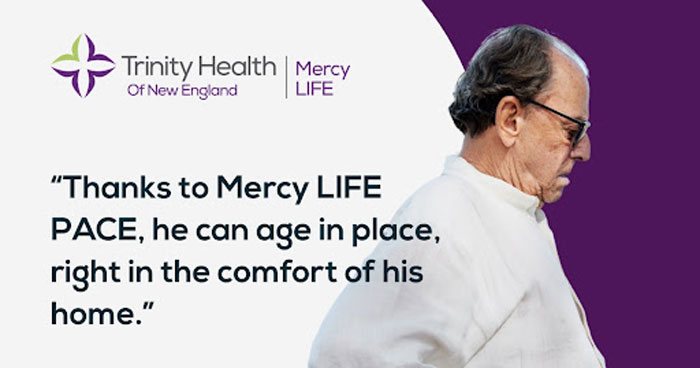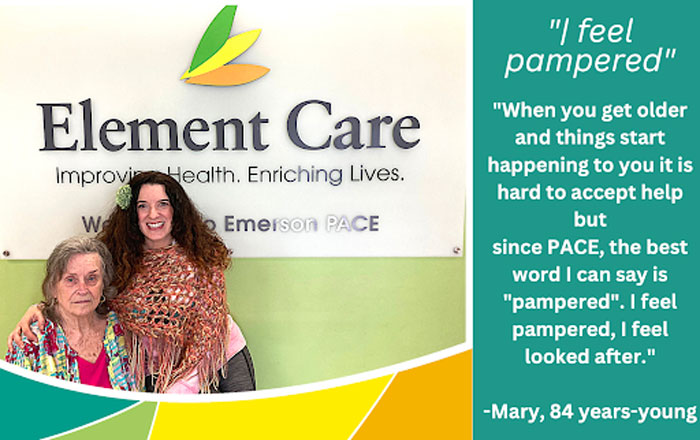PACE: Where You Belong – Part 1: Transforming Lives Through Community-Centric Care for Older Adults
This year, as we celebrate National PACE Month-themed “PACE: Where You Belong,” we begin our 3-part blog series to spotlight each of our eight PACE programs, whose goal is fostering community and connectivity—fundamental elements for individual well-being. For our first blog, we hear stories from three PACE programs; Serenity Care, Mercy LIFE, and Element Care that exemplify the PACE model’s ability to cultivate a compassionate, interconnected community.
The Serenity PACE Approach: Human-Centered Care and Connection
“Who could have ever thought that my ‘golden’ years would turn out to be the happiest period of my life?”
These heartfelt words came from an extraordinary participant who became part of the Serenity Care PACE community four years ago. Initially, she faced the intimidating option of moving into a nursing home, a proposal made even more daunting by language barriers, unfamiliar foods, and her aversion to institutional settings stemming from past experiences.
Then came her serendipitous discovery of Serenity Care PACE. Today, she leads a life of independence and community involvement, especially within her faith group. Her daughter lives in Los Angeles and has witnessed her mother’s metamorphosis:
“Before PACE, every call with my mom left me in tears. She was lonely and anxious, and getting clear information about her health was a struggle. The guilt was overwhelming. Now, she’s cheerful, shares stories about her days at the center, and, most importantly, I’m kept in the loop about her health and medications. Our lives have improved dramatically. We’re so grateful.”

A Lifeline for Independence: The Mercy LIFE PACE Story
In November 2019, Mercy LIFE came into contact with a younger, older adult living with his mother, his lifelong primary caregiver. Born with a brain injury, his life took a turn when his elderly mother could no longer provide the level of care he needed, contemplating a move to long-term care facilities as a last resort.
The man, known for socializing at the neighborhood corner store, often could not return home, resulting in numerous falls from his wheelchair. Faced with this predicament, his sister began exploring alternatives, eventually stumbling upon the PACE program at Mercy LIFE.
After an initial meeting with the family, it was evident that his 86-year-old mother was at her breaking point. Taking a chance on PACE, they enrolled him in the day center, where he now receives personal care and undergoes physical therapy. Now, not only can he use his walker for short distances, but he’s also become a cheerful part of the community, participating in activities and socializing enthusiastically. Thanks to Mercy LIFE PACE, he can age in place, right in the comfort of his home.

A Personal Perspective: Carol Pallazolla and Element Care PACE
Carol Pallazolla, a resident of Gloucester, serves as the Education and Outreach Coordinator for Element Care PACE. After witnessing her mother, Mary, face health challenges, she encouraged her to join Element Care PACE.
“When I joined PACE, I met so many nice people. My nurse, Emma, and my Physical Therapist Grace, to name a few. I have had shoulder pain for so long, and for the first time in a long time…I am pain-free,” said Mary.
Before joining the program, Mary was saddled with a $45 co-pay for each physical therapy session and struggled with medication costs. Now, she not only receives her medications but also gets prescribed Eliquis, which she couldn’t afford previously. Additionally, Mary got a free Grandpad tablet, through which she participates in virtual exercise classes, plays games, and even finds a lifeline during a power outage to connect with her daughter.
Mary sums it up best:
‘I feel pampered…..When you get older, and things start happening to you, it is hard to accept help, but since PACE, the best word I can say is “pampered.” I feel pampered, I feel looked after.’

As we continue to navigate the complexities of healthcare and aging, especially in these isolating times, the stories above illustrate why PACE isn’t just a program—it’s a community where older adults genuinely belong.